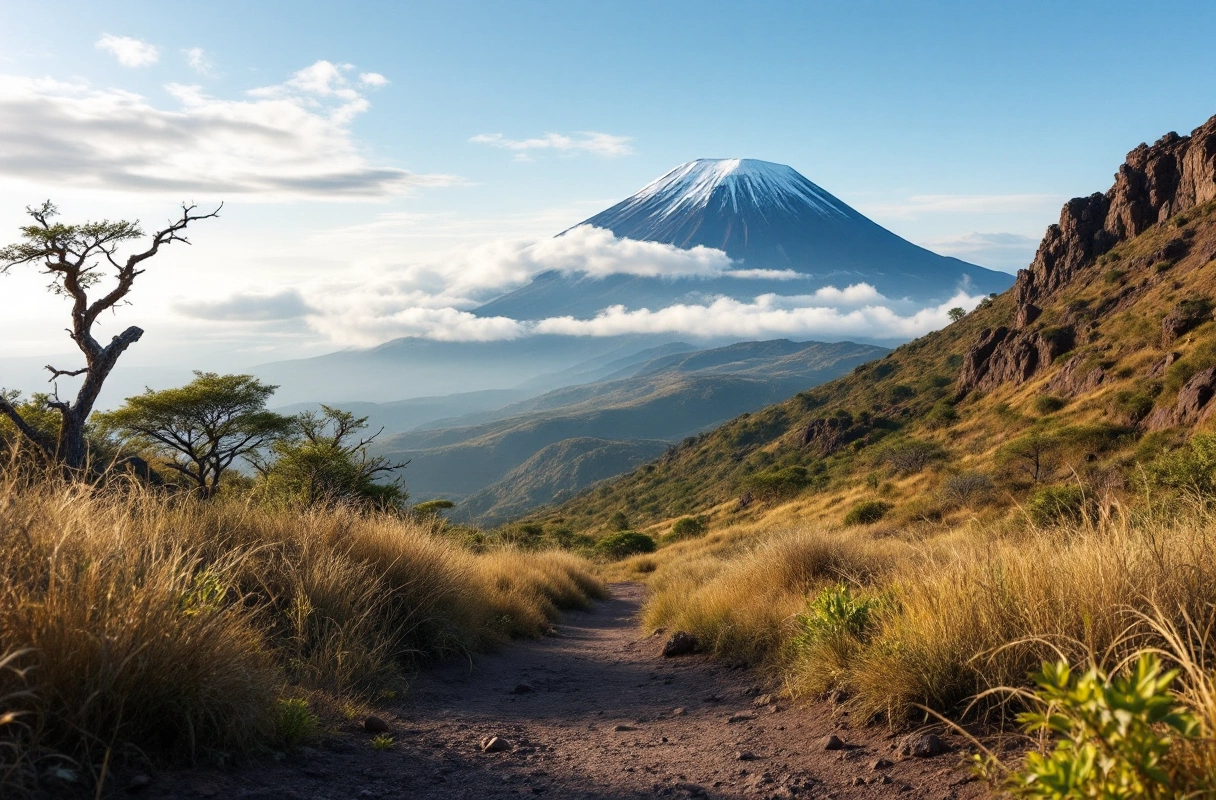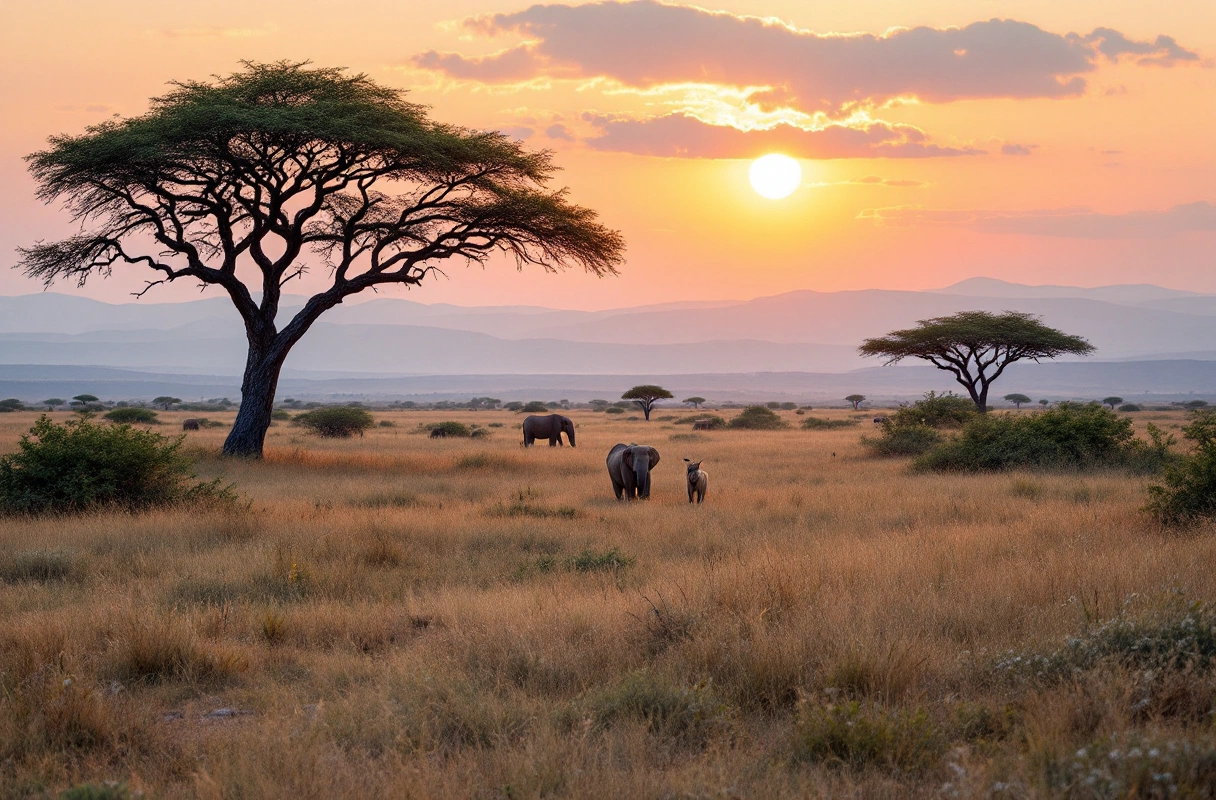
Photographing African animals, especially in the breathtaking backdrop of Kilimanjaro, is an exhilarating experience that blends adventure with artistry. As nature enthusiasts and wildlife photographers embark on this journey, understanding the best practices for capturing these magnificent creatures is essential. This article delves into expert tips for photographing African animals while also highlighting the best times of year to see wildlife experiences.

Kilimanjaro, the highest peak in Africa, offers a diverse range of ecosystems, from lush rainforests to arid savannahs. This diversity supports a wide variety of wildlife, making it a prime location for photographers seeking to capture the essence of African animals.
Rainforest Zone: The lower slopes of Kilimanjaro are covered in dense forests, home to species such as monkeys, birds, and various insects. This lush environment provides an ideal setting for close-up shots of smaller wildlife.
Heath and Moorland Zone: As you ascend, the landscape shifts to heath and moorland, where larger animals like elands and various bird species are often spotted. This area is characterized by its unique flora, which can add interesting elements to wildlife photography.
Alpine Desert Zone: Above the heath, the alpine desert presents a stark landscape with fewer animals but provides unique photographic opportunities, particularly during sunrise and sunset.
Understanding these ecosystems allows photographers to anticipate the types of African animals they may encounter and plan their shots accordingly.
Kilimanjaro is home to a variety of African animals that are both iconic and elusive. Some common species to look out for include:
African Elephants: Majestic and powerful, elephants can often be seen in herds, offering opportunities for dynamic group shots.
Buffalo: Known for their formidable presence, buffalo are frequently found in the grasslands, making them ideal subjects for dramatic photography.
Colobus Monkeys: These striking black-and-white monkeys are particularly photogenic, especially when captured in the lush forest canopy.
By familiarizing yourself with these species, you can better plan your photography sessions to align with their behaviors and habitats.

Timing is crucial when it comes to capturing stunning images of African animals. Different seasons bring unique opportunities and challenges for wildlife photography.
The dry season is often considered the best time for wildlife experiences in Africa, and Kilimanjaro is no exception. During this period, animals congregate around water sources, making them easier to find and photograph.
While the wet season can present challenges, it also offers unique photographic opportunities.
Understanding these seasonal patterns enables photographers to select the best times for their specific wildlife photography goals.

To successfully capture the beauty of African animals on Kilimanjaro, consider the following expert tips:
Camera Gear: A DSLR or mirrorless camera with interchangeable lenses is ideal for wildlife photography. A telephoto lens (at least 300mm) is crucial for capturing distant subjects without disturbing them.
Tripod and Stabilization: Using a tripod or monopod can help stabilize your shots, especially in low-light conditions. A gimbal head can be particularly useful for tracking moving animals.
Extra Batteries and Memory Cards: Wildlife photography often requires long hours in the field, so ensure you have plenty of batteries and memory cards to avoid interruptions.
Get Low: Lowering your camera to the animal's eye level creates a more engaging perspective, bringing the viewer into the scene.
Use Natural Framing: Incorporate elements of the environment, such as trees or rocks, to frame your subject. This adds depth and context to your images.
Be Patient: Wildlife photography often requires waiting for the right moment. Be prepared to spend time observing animal behavior to capture the perfect shot.
Respect for wildlife and their habitats is paramount in wildlife photography. Always maintain a safe distance from animals and avoid disturbing their natural behaviors.
Even experienced photographers can make mistakes when capturing African animals. Here are some common pitfalls to avoid:
Rushing Shots: In the excitement of spotting wildlife, many photographers rush their shots. Take a moment to compose your image carefully before pressing the shutter.
Ignoring Light Conditions: Lighting plays a crucial role in photography. Early morning and late afternoon light is softer and more flattering for wildlife photography than the harsh midday sun.
Neglecting Backgrounds: A cluttered background can detract from your subject. Always be aware of what’s behind your animal and adjust your position accordingly.
By being mindful of these common mistakes, you can enhance the quality of your wildlife photographs significantly.
As a photographer, you have a unique opportunity to contribute to wildlife conservation efforts. By capturing the beauty of African animals, you can raise awareness about their plight and inspire others to take action.
Social Media: Platforms like Instagram and Facebook are powerful tools for sharing your wildlife photography. Use relevant hashtags to reach a broader audience and connect with fellow nature enthusiasts.
Exhibitions and Contests: Participate in wildlife photography contests or exhibitions to showcase your work and promote conservation efforts. Many organizations support conservation through photography initiatives.
Consider donating a portion of your photography profits to wildlife conservation organizations. Many nonprofits work tirelessly to protect endangered species and their habitats, and your contributions can make a significant impact.
As you embark on your journey to photograph African animals on Kilimanjaro, remember the importance of connecting with nature and the incredible experiences it offers. The Banana Slug Club is dedicated to fostering a love for the natural world, providing resources and information for nature enthusiasts, students, and kids eager to learn more about wildlife.
By embracing the tips and insights shared in this article, you can enhance your wildlife photography skills while also contributing to the conservation of these magnificent creatures. Whether you're an aspiring photographer or simply passionate about nature, we invite you to visit our website for more information and resources to help you on your journey.
Join the Banana Slug Club community today and discover the wonders of the world, nature, science, plants, and animals. Together, we can inspire future generations to appreciate and protect the beauty of our planet.
Get free resources, early access to new features and updates.
No spam. Just fun educational emails!